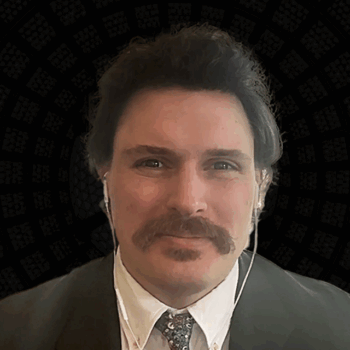In a riveting interview, Sanjeev Sabhlok, PhD, a public health-focused economist, provides a critical analysis of our responses to pandemics, comparing the restrained public and medical reaction to the 1918 influenza pandemic with the widespread panic induced by COVID-19. Despite today’s advanced medical science and communication technologies, and the absence of vaccines during the 1918 pandemic, the recent response seems disproportionately driven by panic. This observation raises pivotal questions about the evolution of public health strategies and the increasing influence of fear in policy-making.
Table of Contents
The Decline of Rationality in Modern Society
Sabhlok delves into the unintended consequences of societal progress on human rationality and our responses to crises. As humanity has advanced, becoming less reliant on the rudimentary survival skills that define the animal kingdom, there has been an ironic decline in our collective rationality, particularly evident in our handling of pandemics. This shift, marked by increased wealth, leisure, and a safety-first approach, has paradoxically heightened our susceptibility to panic, distancing us from the pragmatic, survival-oriented responses observed in other species.
Historical Perspective and Modern Health Crisis Management
Drawing on the insights of early public health pioneers, notably the sanitarians, Sanjeev Sabhlok critiques the modern tendency towards fear-driven health decisions. Centuries ago, sanitarians conducted rigorous analyses on the efficacy and dangers of quarantine, advocating for evidence-based interventions—a principle seemingly neglected in recent times. This historical perspective, juxtaposed with the handling of COVID-19, underscores the need for a reevaluation of our health crisis management tactics, suggesting that our current approach may be overshadowed by an era of safetyism, where society’s wealth and leisure have paradoxically led to heightened fear and risk aversion.
Neurological and Psychological Factors Influencing Panic
Sanjeev Sabhlok further explores the unique human propensity for panic, attributed to the deep linkages between the limbic system and the frontal lobe of the brain, which foster feedback loops of fear. This neurological insight, combined with an understanding of abnormal psychology, suggests that the modern human’s inclination towards panic is exacerbated by our capacity for imagination and exacerbated by our comparatively more comfortable, risk-averse lifestyles.
The Call for Rational Public Health Policies
Contrasting the calm response to the 1918 pandemic and Sweden’s measured approach during COVID-19, the interview calls for a return to a more rational, evidence-based public health policy that prioritizes long-term well-being over immediate, reactionary measures. The goal is to encourage a societal and professional shift towards recognizing and mitigating irrational fears, fostering a culture where decisions are regularly revisited and reassessed in light of new evidence and perspectives.
Summary of Sanjeev Sabhlok’s Key Points
- Early sanitarians highlighted the necessity of rigorous cost-benefit analysis before implementing quarantine measures, emphasizing a principle highly applicable to contemporary public health decisions.
- The occurrence of panic among healthcare professionals during pandemics is significantly influenced by the distinctive connection between the limbic system and the frontal lobe in humans, presenting a wider societal challenge.
- Fear-driven responses to pandemics often overshadow rational, analytical approaches, resulting in public health policies that might not align with the best interests of societal well-being.
- Historical instances, such as the minimal panic during the 1918 influenza pandemic and Sweden’s rational handling of COVID-19, demonstrate the feasibility of adopting measured and effective public health strategies even in the face of global crises.
- The human capacity for advanced cognition and imagination, while a source of tremendous innovation and creativity, also renders us uniquely susceptible to panic, affecting our collective response to perceived threats.
Conclusion
In conclusion, Sanjeev Sabhlok’s analysis sheds light on the paradoxical nature of progress in modern society, where advancements in wealth and technology have ironically led to diminished rationality in our response to crises. By understanding the historical context and neurological underpinnings of panic, Sabhlok advocates for a return to evidence-based policymaking in public health, emphasizing the importance of rational decision-making in safeguarding societal well-being.
FAQs
Sabhlok’s analysis highlights the paradox of progress, showcasing how modern advancements have led to decreased rationality in our response to crises, particularly pandemics.
Societies can mitigate panic by fostering a culture of rationality and evidence-based decision-making, promoting transparent communication, and providing accurate information from trusted sources.
Evidence-based policymaking ensures that decisions are grounded in empirical data and research, leading to more effective and efficient public health interventions.
Understanding the neurological basis of panic helps elucidate why humans react the way they do in crisis situations, informing strategies to mitigate panic and promote rational responses.
Individuals can contribute by staying informed from reputable sources, critically evaluating information, and advocating for evidence-based decision-making in their communities and workplaces.
Related Articles
Discover more from Randy Bock MD PC
Subscribe to get the latest posts sent to your email.
























